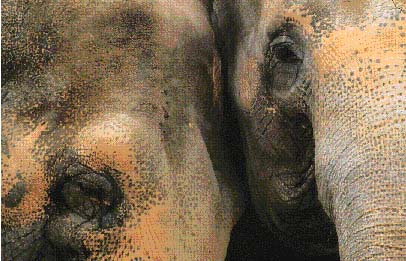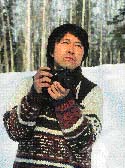



In November 1993 the inaugural American exhibition of the greatly talented Japanese photographer Michio Hoshino opened at Carnegie Museum of Natural History. Visitors to the museum will remember his Alaskan Tapestry exhibit, featuring more than 60 wonderful large-format full color images of Alaskan wildlife. A New York Times obituary in September 1996 announced the death of the 44-year- old photographer on Kamchatka Peninsula in Russia, where he was killed by a bear while on location filming a documentary.
The Carnegie connection to Hoshino is worth noting. He was a friend of former Carnegie Museums public relations director Janet McCall, who first met him while on a residency at a Tokyo Museum, and who introduced his work to then-museum director James King. The acclaimed photographer came to Pittsburgh to open his show, and talked about his fascination with photographing the Alaskan wilderness.
Hoshino typically worked alone in the wilderness, achieving his superb close-up pictures through a complete immersion in the world of the animals. Soft-spoken and philosophic, he was a devoted environmentalist who took care not to disturb the natural world. If bears saw him fishing, he would throw fish back into the water so they would not see him as a threat to their food supply. An Inuit woman taught him that when he dug up hoards of arctic potatoes, he should replace what he took with something else, such as dried salmon, so the mammals who had stored the potatoes would not suffer. His photographs of great herds of migrating caribou in northern Alaska brought home to thousands of people, including government officials, the need to preserve the environmental links to the natural world which past Americans experienced with buffalo and other creatures. His wildlife photographs were featured in books such as Grizzly Bear Family Book and Moose, in calendars, and in magazines such as National Geographic, Audubon, Smithsonian, and Geo. In 1990 he received the Ihea Kimura Prize, the highest award given to a photographer in Japan.
In writing about the death of her photographer friend in a recent Pittsburgh Post-Gazette article, McCall concluded that, "Despite his tragic death his voice will not be silenced. His magnificent photographs will eloquently speak on behalf of the Alaskan wilderness for many years to come."
-R. Jay Gangewere